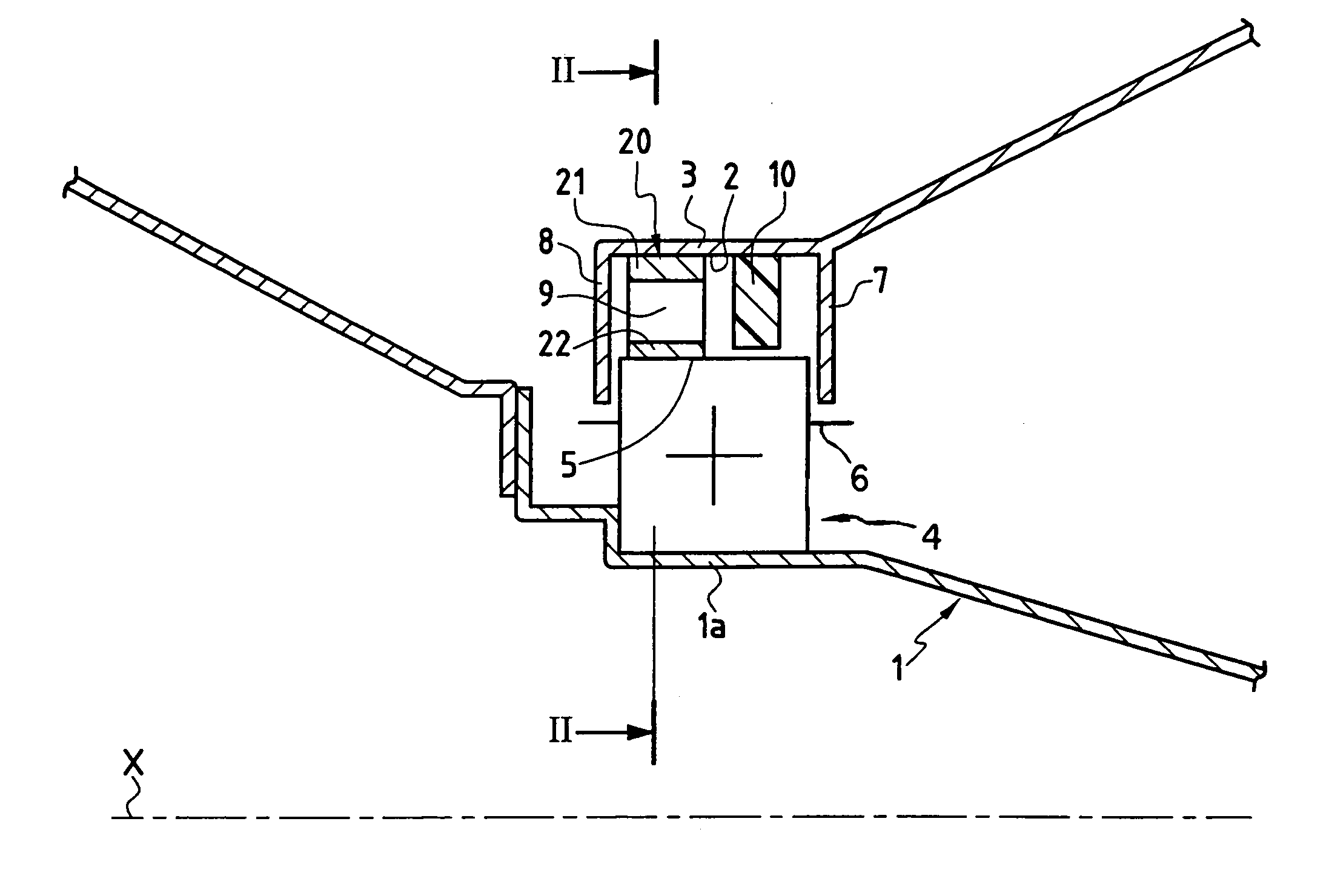Rotor recentering after decoupling
a technology of rotor and decoupling, which is applied in the direction of machines/engines, bearing unit rigid support, liquid fuel engines, etc., can solve the problems of fan blade damage, fan damage, and possibly with reduced efficiency, and achieve the effect of avoiding impacts
- Summary
- Abstract
- Description
- Claims
- Application Information
AI Technical Summary
Benefits of technology
Problems solved by technology
Method used
Image
Examples
Embodiment Construction
[0033]FIG. 1 is a diagram of the front portion of a shaft 1 for driving a fan in a turbojet of axis X, said shaft being held on the axis X in the bore 2 of a stator structure 3 by means of a bearing 4 having an inside bushing that is assembled snugly on the periphery of a portion 1a of the shaft 1, and having an outside bushing that is held in the bore of a bearing support 5, which bearing support 5 has a diameter that is much smaller than the diameter of the bore 2 of the stator structure 3.
[0034]The bearing support 5 is connected to the stator structure 3 by radially fusible elements, or programmed breaking zones, referenced 6. References 7 and 8 indicate axial abutments that are secured to the stator structure 3 for limiting the axial displacement of the bearing support 5.
[0035]An annular space 9 is thus arranged radially between the periphery of the bearing support 5 and the wall of the stator structure 3 which defines the bore 2. The radial thickness of the space is equal to th...
PUM
 Login to View More
Login to View More Abstract
Description
Claims
Application Information
 Login to View More
Login to View More - R&D
- Intellectual Property
- Life Sciences
- Materials
- Tech Scout
- Unparalleled Data Quality
- Higher Quality Content
- 60% Fewer Hallucinations
Browse by: Latest US Patents, China's latest patents, Technical Efficacy Thesaurus, Application Domain, Technology Topic, Popular Technical Reports.
© 2025 PatSnap. All rights reserved.Legal|Privacy policy|Modern Slavery Act Transparency Statement|Sitemap|About US| Contact US: help@patsnap.com



